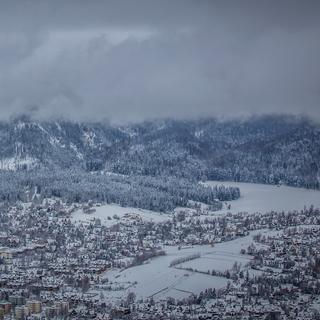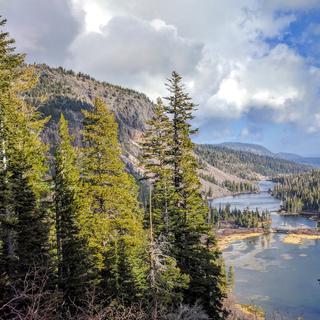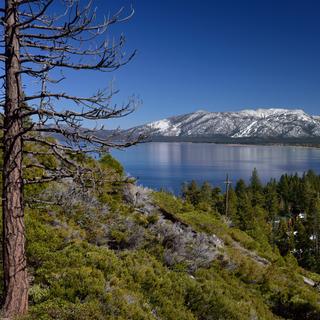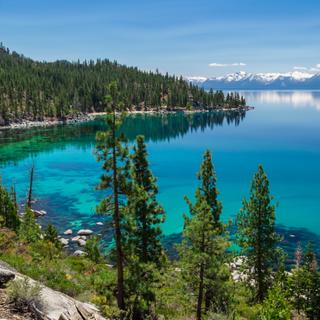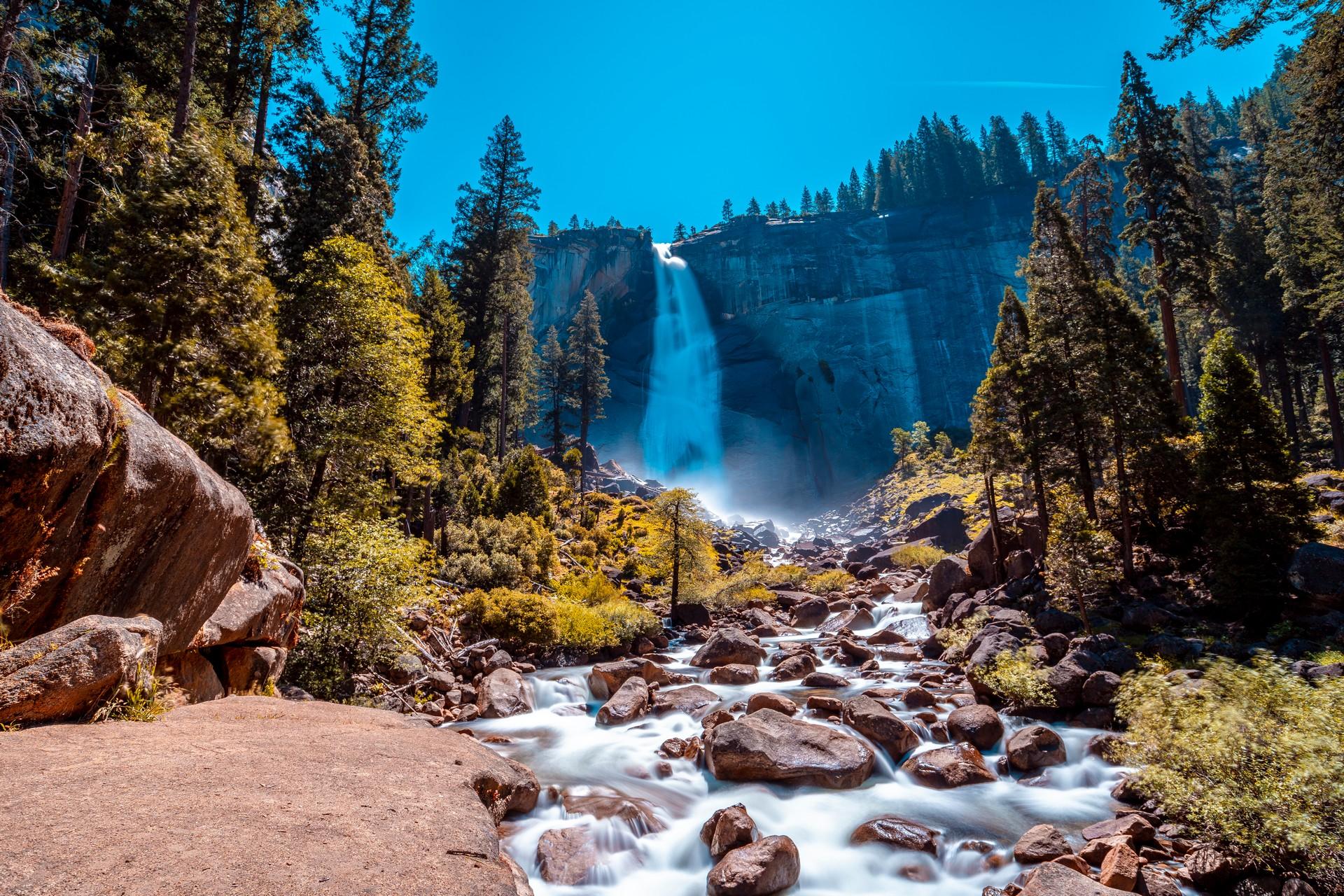
Yosemite National Park weather and climate

Yosemite National Park weather and climate
Day
21 °C
Night
7 °C
Precipitation
9 mm
in month
Rainy days
2 days
in month
Daylight
14 hours
average
Sunshine
12 hours
average
Humidity
44 %
Weather charts for Yosemite National Park

Find more destinations like this
Destinations with similar weather to Yosemite National Park
Other destinations in California - Mountains
Closest cities for Yosemite National Park
Weather overview for Yosemite National Park
Weather overview
The climate of Yosemite National Park in the United States is generally temperate, characterized by variations in temperature and precipitation throughout the year. Daytime temperatures average between 3 °C (37 °F) degrees Celsius during the colder months and reach up to 22 °C (71 °F) degrees Celsius in the height of summer. August not only brings the highest daytime and nighttime temperatures, with averages of 22 °C (71 °F) degrees and 7 °C (45 °F) degrees respectively, but also sees the least rainfall, averaging just 2 of precipitation. In stark contrast, March is characteristically the wettest month, receiving rainfall on an average of 9. From the balmy summer nights to the brisk winter dawns, the park's weather is a dynamic backdrop to its natural beauty.
January weather
In Yosemite National Park, as we transition out of winter, we witness an increase in sun exposure amounting to 6 hours. Concurrently, the prevalence of rainy days continues to escalate, reaching 8. Additionally, this period is marked by the lowest wind speeds, averaging about 4 m/s.
February weather
February in Yosemite National Park features the year's lowest day and night temperatures, bottoming out at 3 °C (37 °F) and -8 °C (17 °F) respectively. An upward trend in the number of rainy days is noted at 9, while there's a slight decrease in the total rainfall. The amount of sunshine continues to rise, now reaching 7 hours.
March weather
As spring unfolds in Yosemite National Park, the peak in rainy days is evident. However, we notice the total rainfall is on a downturn, now at 109 mm (4.31 in). Temperatures during the day start their ascent, averaging 5 °C (40 °F), while nightly averages begin to warm as well, sitting at -7 °C (19 °F). Sunlight hours extend to 9 hours.
April weather
With the arrival of April in Yosemite National Park, both day and night temperatures climb, registering at 7 °C (44 °F) and -5 °C (23 °F) respectively. A decline in the number of rainy days is observed, standing at 6, alongside a continued decrease in rainfall quantity, now at 66 mm (2.60 in). Sun exposure hours are on the rise, reaching 10 hours, and the peak wind speed for the year is noted at 4 m/s.
May weather
Yosemite National Park continues to warm in May, with consistent increases in both day and night temperatures, averaging -2 °C (29 °F) at night. Rain occurrence keeps decreasing, now at 5, and rainfall volume also diminishes, measured at 32 mm (1.27 in). The park enjoys extended hours of sunshine, now at 11 hours.
June weather
June's arrival marks a gentle rise in temperatures within Yosemite National Park, with nighttime warming to an average of 2 °C (36 °F). As the tourist season gently commences, a noticeable reduction in rainfall volume, at 14 mm (0.54 in), parallels a minimal number of rainy days, averaging 3. Prolonged periods of sunshine, averaging 12 hours, characterize the month.
July weather
As the tourist season peaks in July at Yosemite National Park, the dry season approaches its zenith. A noticeable rise in daytime temperatures is complemented by warm nights averaging 7 °C (44 °F). There's a discernible drop in rainy days to 2. Maximum sunlight hours prevail.
August weather
Yosemite National Park basks in peak summer warmth during August, as day temperatures hit their maximum at 22 °C (71 °F) and nights remain warm at 7 °C (45 °F). The lowest incidence of rainy days is seen, counted at 2, while the rainfall volume is also at its least. The dry and tourist seasons remain in full swing during this month.
September weather
September in Yosemite National Park marks the start of cooler days, with average daytime temperatures at 18 °C (64 °F), and a decrease in night warmth. An uptick in the number of rainy days can be perceived, now documented at 3. Rainfall volume begins to rise again, reaching 18 mm (0.72 in), as sunshine hours and day length start to wane.
October weather
The descent into the cooler months continues in October for Yosemite National Park. Day temperatures follow a downward path to 13 °C (55 °F), and nights grow cooler at 0 °C (33 °F). The number of rainy days rises once more, tallying at 4, and the total rainfall sees an uptick, recorded at 43 mm (1.70 in).
November weather
Yosemite National Park's weather cools significantly in November, as day temperatures slide to 7 °C (45 °F) and night temperatures drop to -4 °C (25 °F). A further increase in rainy days is observed, with 7 capturing the trend, alongside a heightened rainfall volume at 100 mm (3.92 in). Diminished sunlight and shorter daylight hours become more apparent.
December weather
In Yosemite National Park, the advent of December is marked by persistently rising rainy days, now at 8, and the year's highest rainfall volume at 142 mm (5.59 in). Day and night temperatures drop to 4 °C (39 °F) and -7 °C (19 °F) respectively. The shortest daylight hours are recorded, along with minimum sunshine exposure at 6 hours.
FAQs
How many hours of sunlight can one enjoy in March in the park?
In Yosemite National Park, March offers approximately 6 hours of sunlit hours.
What level of precipitation can be anticipated during February in the park?
In February, Yosemite National Park generally receives around 122 mm (4.81 in) of rainfall.
What's the day temperature trend in Yosemite National Park during March?
In March, there's a gradual increase in the day temperature, with a mean value of 5 °C (40 °F) in Yosemite National Park.
What changes occur in Yosemite's weather in April?
April sees an uptick in temperatures, dwindling precipitation, expanding sunlit periods, and the year's strongest winds in Yosemite.
What is the trend in rainfall during May in Yosemite?
May in Yosemite reveals a downward trend in both the frequency and amount of rainfall.
How does the Yosemite climate change with the onset of June?
In June, the park experiences warmer nights, fewer rainy days, and extensive sunny intervals, signaling the start of tourist season.
Describe the summer weather experienced in Yosemite during July.
July in Yosemite is characterized by peak tourist activity, minimal rainfall, and ample sunshine, emphasizing summertime delight.
What weather conditions prevail in Yosemite National Park in August?
August showcases an idyllic summertime climax in Yosemite with scorching daytime heat, mild nights, and sparse rainfall.
What should visitors expect of Yosemite's weather as autumn approaches in September?
The initial signs of autumn bring cooler days, an increase in rainfall, and a gentle reduction in daylight hours at Yosemite.
Does October in Yosemite indicate the arrival of wetter weather?
In October, Yosemite transitions towards a wetter climate with cooler temperatures and a rising frequency of rainy days.
How does November's weather signal the approaching winter in Yosemite?
With colder days, extended rainfall, and reduced daylight, November's weather ushers in the winter season in Yosemite.
What is distinctive about Yosemite's climate as the year concludes in December?
December's hallmark in Yosemite is heightened precipitation, colder temperatures, and the least amount of daylight and sunshine of the year.


